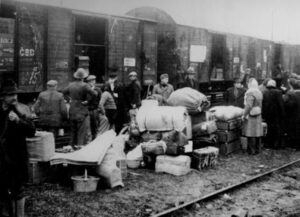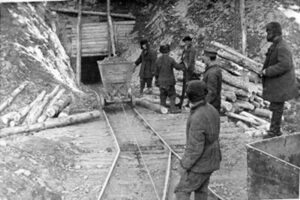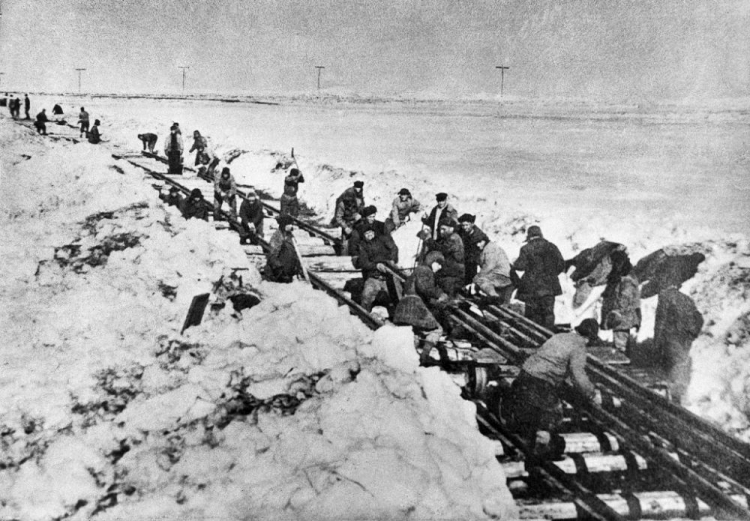In Kolyma or in other camps, Poles learned from NKVD officers that the purpose of their work was not punishment but “death”. All the prisoners who managed to survive emphasized that Kolyma was not a punishment, but a process of dying over time, says Sebastian Warlikowski, editor of the collection of memoirs “Nie tylko Kołyma. Polacy w sowieckich łagrach” (“Not Only Kolyma. Poles in Soviet Labor Camps”). On 17 September, we commemorate the World Sybirak Day established by the Sejm of the Republic of Poland.
Polish Press Agency: Many protagonists of this book had their first contact with Soviet power on 17 September 1939. Many experienced it only a few years later. What do all the memories have in common when it comes to the particular moment that determined the fate of the authors of the published memoirs?
Sebastian Warlikowski: They share the memory of exceptional hostility towards Poles. Soviet officials repeated to prisoners that they represented the “lords of Poland” and that they would be punished in accordance with Soviet justice. On 17 September some of the authors of these memoirs were in the middle of a fight. They often learned about Soviet aggression from obscure rumors. Nobody knew whether the Bolsheviks were entering the war as allies or enemies. One account describes the moment when the commander of a Soviet tank leaned out of the manhole and shouted at the Polish soldiers: “Long live Poland!” This made the Poles even more confused, the more so because later shots were fired into the air. It only then turned out that the Soviets were enemies who had fulfilled the Soviet-German agreement on the partition of Poland.
After being arrested or taken prisoner, interrogations followed. The officers explained to the Poles that they were enemies who threatened the Soviet system and that they had to undergo a re-education path, one of which included forced labor in one of the Gulag Archipelago camps. A similar pattern concerned those arrested by the NKVD after the Red Army re-entered in 1944 when the underground soldiers became victims of terror. For the Soviets, the underground was an illegal organization against the new order. Due to this, Poles encountered particular hostility.
Already in Kolyma or in other camps, Poles learned from NKVD officers that the purpose of their work was not to serve a sentence, but to “die”. All the prisoners who managed to survive emphasized that Kolyma was not a punishment, but a slow death.

PAP: One of the prisoners mentions that the basic rule of the camps was the assumption that “the NKVD is never wrong.” How did Poles learn to function in the new reality and adapt to the “new world”?
Sebastian Warlikowski: Let us not forget the words of General Władysław Anders and Gustaw Herling-Grudziński, who emphasized that upon hearing the word “Kolyma” one shook with fright. When uttering it, one would lower their voice. A legend circulated around Kolyma; it was compared to Auschwitz. It was described as a “white crematorium”. Adapting to this reality was all the more difficult as it was no coincidence that this place was called a “miraculous” or “cursed” planet. It was on the continental part of the Soviet empire, but was separated from the rest of the country by a mountain range and from the rest of the world by the ocean. Kolyma was accessible mainly by sea, and only for a few months of the year when the sea was not ice-bound. Let us remember that the temperature in Kolyma reaches minus 70 Celsius degrees. To this day, local residents, when they go to another part of Russia, say that they “go to the continent”. Let us not forget that the prisoners formed a diverse national mosaic, and this led to many conflicts. The Soviet authorities also mixed political and criminal prisoners. The NKVD officers quickly came to an understanding with the criminals, who thus reached the top of the camp hierarchy. Criminals were allowed to bring order. The NKVD were not interested in their “methods,” and that led to murders.
Criminals also had the privilege of being released from work. Their standard amount of work of logging or mining raw materials had to be made up by the other prisoners. In this way, the work became an even bigger torment and was devastating to the exiles. In such conditions, the only way to survive was to adapt to the new conditions, which included playing games, conning, helping each other and learning important information. Such priceless information could be, inter alia, how to get a job in the kitchen or canteen and eat burnt porridge there. Helping each other significantly increased the possibility of survival. The reality of the Soviet camps showed that it was difficult to be a human being, but at the same time being one paid off. At the other extreme, there were drastic survival methods, such as self-mutilation, to avoid the hardest physical labor in inhumane conditions. In this way, it was possible to get to the medical station, where the conditions were slightly better.

PAP: There were also “psychological” ways to survive. One of the prisoners mentioned that it was helpful , among other things, to tell others about what one ate when one was free. This person came from a relatively wealthy family, so his stories generated special interest. How was it possible to survive, even up until 1955?
Sebastian Warlikowski: The camps in Kolyma functioned until 1957. Those who did not join the Anders Army and survived, were only then returned to the “new Poland”, which had little to do with the country they remembered. Their hometowns were often outside Poland. They were moved when crossing the former Polish border, but in a moment the Poles who stayed in these parts told them that it was no longer Poland. The encounter with this reality was a dramatic experience, because it turned out that the old world no longer existed and that life had to be built on new foundations. The returnees also quickly realized that they could not talk openly about their experience.
Remembering your former life was one way to survive. The prisoners gathered and talked about what they ate or would eat when they returned to their homeland. Many mentioned that laughter was also a last resort. Their sense of humor was peculiar, but it created a psychological barrier against believing that all they had to do was to slowly die. This is how the morale of prisoners was built.
Former prisoners were often asked what they thought while in Kolyma. One of them replied that they thought about nothing. One only thought about what would be, not what touched them every day. Another prisoner ended his memories with a reflection about forgetting the normal world in the camp. He said that for him there was only a world where you could die at any moment. Another prisoner claimed that it was pointless to talk about life in the camp to those who did not survive it, because it was like telling a “blind man about colors”. Many indicated that what they experienced should be removed from memory.

PAP: On the last page of your book there is a photo of the monument commemorating the Kolyma victims. There are many such monuments in contemporary Russia. How to reconcile these forms of memory about the crimes of communism with the whitewashing of this period by the authorities of modern Russia or including them in the program of building an empire?
Sebastian Warlikowski: I think this is a kind of “historical schizophrenia”. The Monument of the “Mask of Sorosa” is located in Magadan and was unveiled in 1996. There was also another monument in Magadan. In 1989, a bust of Eduard Berzin, who was one of the most important creators of the camp system in Kolyma, was erected in front of the town hall. At that time, people became aware of what the labor camp system was. There were still many former prisoners who decided to stay there. They were motivated by, among other things, wages, which, due to extremely difficult conditions, were twice as high as in other regions of the Soviet Union. Everywhere there were traces of crimes as tangible as the bones of prisoners along the death roads. Nevertheless, a monument to the local co-creator of this system, responsible for the crimes, was unveiled.
The memory of Kolyma and other islands of the archipelago is also influenced by the difference from the German concentration camps. When we visit Dachau, Auschwitz and other sites of crimes committed by German National Socialism, we come across traces of this tragedy, monuments and museum exhibitions. This is how we learn about the fate of the victims. Historians have free access to archival material from these places. The situation is completely different in the case of the former Soviet camps. There is no documentation of their functioning. Rather, the policy of contemporary Russia is to insist that “this is a story that should not be returned to.” Of course, in the last three decades, steps have been taken to commemorate the victims of Soviet crimes. In 2008, the then-president Dmitry Medvedev laid flowers under the Mask of Sorrows. Such gestures, even by the formally highest representative of the Russian government, do not, however, change the principle of silence about communist crimes. It is also influenced by the fact that the terror system was aimed at many nations. It is difficult for Russia to admit that the USSR, of which it feels its heir (Vladimir Putin himself in 2005 considered the collapse of the Soviet Union to be the greatest geopolitical catastrophe of the 20th century), murdered so many people of other nationalities. In the current geopolitical situation, when we observe preparations for the Liberation Day celebrated in Belarus on 17 September, it is important to remember the importance of this day and others. The imposition of such a narrative makes one forget about the prisoners of labor camps and other victims of crimes committed by the Soviet system.

PAP: How did you collect the memories that make up this book?
Sebastian Warlikowski: These are memories written mainly in the nineties by veterans of the Anders Army. The exceptions are, among others, memoirs published in the 1960s in Canada. Most of the records are collections of the Siberian Union, which are kept, among others, at the Karta Center. Many of them end with expressing the hope that maybe someone will eventually become interested in the fate of labor camp prisoners. Jerzy Michalewski’s memoirs remain unfinished. Their author did not manage to write down his fate because he was busy helping others who survived. (PAP)
Translation: Aicja Rose & Jessica Sirotin
Source: dzieje.pl





